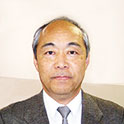Biennial State-of-the-Art Sensors Technology in Japan 2019-2020
A special issue of Sensors (ISSN 1424-8220). This special issue belongs to the section "State-of-the-Art Sensors Technologies".
Deadline for manuscript submissions: closed (31 December 2020) | Viewed by 2615
Special Issue Editor
Interests: low-energy devices for mobile sensors; quantum devices applicable to biomedical sensing; new applications of photoplethysmogram and pulse oximetry; advanced bio-impedance spectroscopy; electronic materials for sensing and their fabrication technology
Special Issues, Collections and Topics in MDPI journals
Special Issue Information
Dear Colleagues,
Historically, it has been considered that sensing belongs to analog technology, and unfortunately, very little information has been processed as a result of this. However, this belief has already become old-fashioned because analog signals consist of much information that has not been processed so far. In addition, some analog signals are intrinsically nonlinear, and it is not easy for us to analyze such signals. However, it will be possible to do that when nonlinear signal models are applied to them. This is a mathematically and technologically challenging topic of study for future applications.
Thus, we still have many potential subjects that should be reconsidered. Interplay between materials, devices, fabrication process, circuits, and signal processing will be of great importance in this century.
This Special Issue strives to provide an overview of state-of-the-art sensor technology in Japan, where this field evolved to a highly innovative and dynamic research area. Research articles covering novel, highly-functional, and intelligent sensor systems and their applications are invited.
Individual topics of interest include but are not limited to:
- Biosensing devices;
- Chemical and physical sensor systems;
- Fiber optic sensing and surface plasmon resonance sensors;
- Acoustic sensing devices;
- Micro-integrated sensor devices;
- Remote sensing devices;
- Structural health monitoring devices;
- Environmental analytics;
- Optical metrology;
- Medical diagnostics and monitoring;
- Ambient assisted living and e-health systems;
- Wearable sensor systems;
- Mathematical algorithms for signal analysis.
Prof. Dr. Yasuhisa Omura
Guest Editor
Manuscript Submission Information
Manuscripts should be submitted online at www.mdpi.com by registering and logging in to this website. Once you are registered, click here to go to the submission form. Manuscripts can be submitted until the deadline. All submissions that pass pre-check are peer-reviewed. Accepted papers will be published continuously in the journal (as soon as accepted) and will be listed together on the special issue website. Research articles, review articles as well as short communications are invited. For planned papers, a title and short abstract (about 100 words) can be sent to the Editorial Office for announcement on this website.
Submitted manuscripts should not have been published previously, nor be under consideration for publication elsewhere (except conference proceedings papers). All manuscripts are thoroughly refereed through a single-blind peer-review process. A guide for authors and other relevant information for submission of manuscripts is available on the Instructions for Authors page. Sensors is an international peer-reviewed open access semimonthly journal published by MDPI.
Please visit the Instructions for Authors page before submitting a manuscript. The Article Processing Charge (APC) for publication in this open access journal is 2600 CHF (Swiss Francs). Submitted papers should be well formatted and use good English. Authors may use MDPI's English editing service prior to publication or during author revisions.
Keywords
- Biosensors
- Chemical sensors
- Physical sensors
- Sensor networks
- Remote sensors
- Reliable signal analysis
- Possible algorithms






